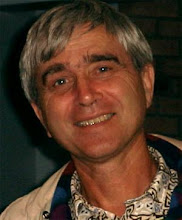 Well it is done. One coat of wipe on Polyurethane. I will apply another later after a little finish sanding. But we have a Minwax finisher presenting to-night so I will wait and see what he has to say.
Well it is done. One coat of wipe on Polyurethane. I will apply another later after a little finish sanding. But we have a Minwax finisher presenting to-night so I will wait and see what he has to say. The top is quite nicely figured tiger maple. Slightly marred by dark streaks at the glue joins as I was too miserly to cut off enough of the wood to get rid of the weather darkening.
The top is quite nicely figured tiger maple. Slightly marred by dark streaks at the glue joins as I was too miserly to cut off enough of the wood to get rid of the weather darkening.It seldom pays to be cheap with material use.
 This picture shows the unfinished table outside.
This picture shows the unfinished table outside.And there you have it. I still have another table to make but will wait a bit before starting that as I have an order for many bowls which needs attending to.

 This picture above shows the tenon left at the bottom of the pedestal.
This picture above shows the tenon left at the bottom of the pedestal. This is the "saucer" with a hole drilled the same size as the tenon.
This is the "saucer" with a hole drilled the same size as the tenon. I inserted a small walnut piece with some inset turquoise.
I inserted a small walnut piece with some inset turquoise. This is the piece finished on the lathe.
This is the piece finished on the lathe. Here I am fitting the saucer onto the tenon. This will cover all the leg attachment complex and give a little visual unobtrusive "extra" to the table.
Here I am fitting the saucer onto the tenon. This will cover all the leg attachment complex and give a little visual unobtrusive "extra" to the table.












 Did a little historical research at Fort York.
Did a little historical research at Fort York.
 I just completed this golf trophy base for a golfing customer. He supplied the wood and the Irish cut glass decanter.
I just completed this golf trophy base for a golfing customer. He supplied the wood and the Irish cut glass decanter.